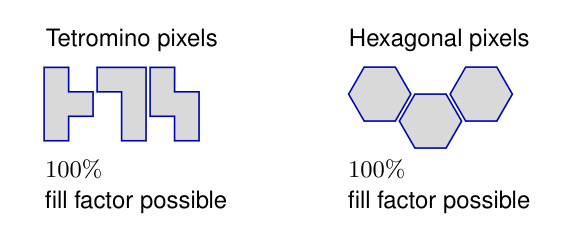Using Non Regular Sensor-Concepts to Acquire Images with higher Resolution
Description
A conventional image sensor consists of rectangular pixels arranged in a regular grid with equal spacing. The distance between the pixels determines the maximum frequency that can be captured by the sensor. Consequently, whenever frequencies occur that are higher than determined by the Nyquist theoreme, aliasing is present in the image.
A common approach to increasing the image resolution is to scale up the number of pixels. However, this means that the pixels become smaller and therefore each photo element accumulates less light, which in turn reduces the overall light sensitivity of the sensor.
An alternative solution to circumvent aliasing artefacts and increase the spatial resolution is to use irregular pixel shapes or a non-regular grid.This allows for higher image quality after reconstructing the image on a higher resolution grid without increasing the number of physical pixels.
For this purpose, novel, irregular sensor concepts with, for example, tetromino-shaped or hexagonal pixels are of interest, as shown below. In order to design the sensor to be as light-sensitive as possible, the new pixel shapes must also fill the entire sensor surface without any gaps. Accordingly, the design of the sensor layout varies in complexity depending on the pixel shape.

To evaluate the effect of such non-regular sensor layouts, a high-resolution reference image is subsampled with the respective sensor pattern. The missing points of the image signal on the high-resolution grid are then reconstructed using the Local-Joint Sparse Deconvolution and Extrapolation (L-JSDE) algorithm. To assess the quality of the resulting high-resolution image, it is compared with the reference image in terms of PSNR and SSIM.
Prerequiste
Experience in programming with MATLAB/Python and good knowledge of image and video processing is required.
